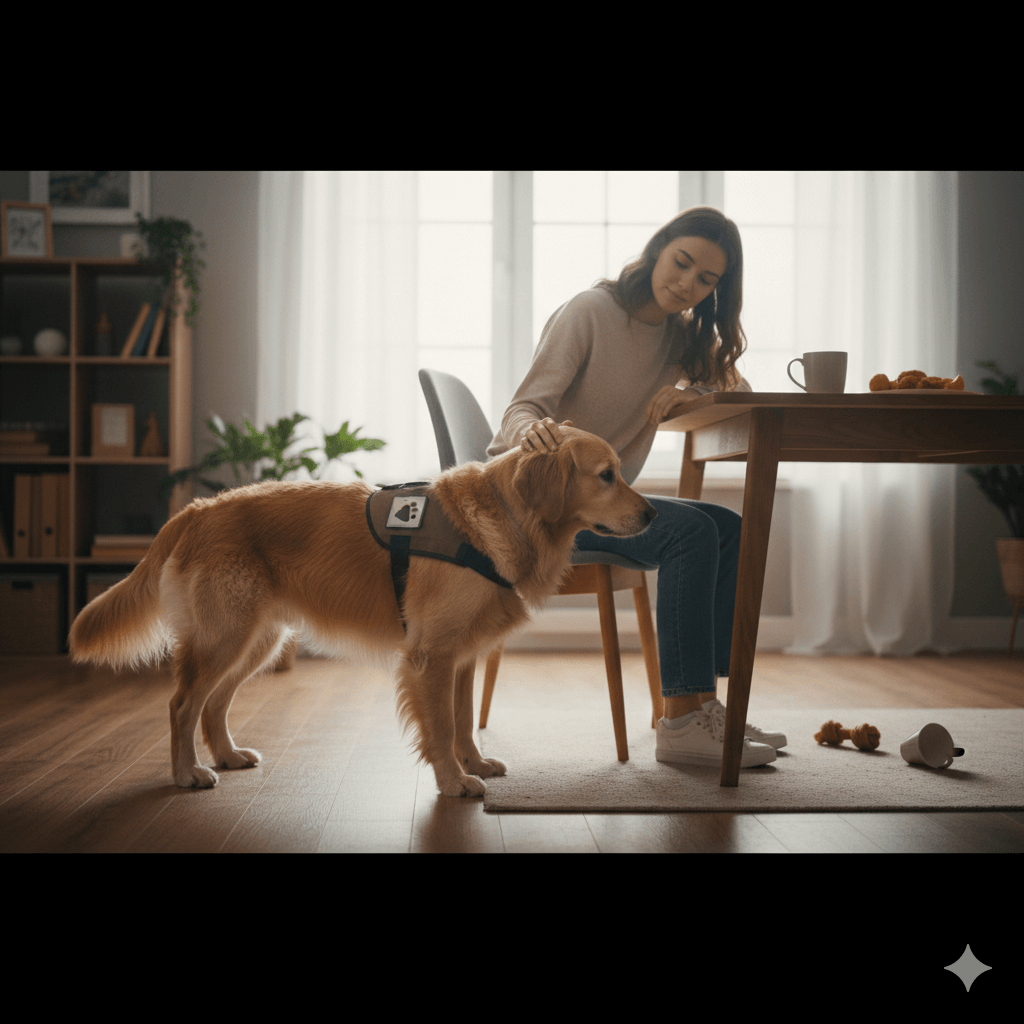Does Spaying Calm a Dog Down? Unveiling the Truth Behind the Procedure
If you’re a dog owner, you’ve probably heard about spaying and its potential effects on your furry friend’s behavior. One common question that arises is whether spaying can calm a dog down. This topic has sparked numerous discussions among pet owners and veterinarians alike. While some swear by the calming effects of spaying, others remain skeptical, wondering if it truly impacts their dog’s temperament. In this blog post, we’ll dive deep into the science behind spaying, explore how it might influence your dog’s behavior, and answer whether it truly helps in calming them down. By the end, you’ll have a clearer understanding of what to expect from this procedure and how it could benefit your beloved companion.
Understanding What Spaying Actually Is
Before diving into whether spaying calms a dog down, let’s first clarify what the procedure entails. Spaying, also known as ovariohysterectomy, is a surgical process where a female dog’s reproductive organs are removed. This prevents her from going into heat and eliminates the possibility of pregnancy. Here’s a breakdown of key aspects related to spaying:
Purpose of Spaying : The primary goal is to control the pet population and reduce health risks like uterine infections or mammary tumors.
Age for Spaying : Veterinarians often recommend spaying dogs between six months and two years of age, depending on breed and health condition.
Procedure Details : It’s performed under general anesthesia and involves making an incision in the abdomen to remove the ovaries and uterus.
Recovery Time : Most dogs recover within two weeks but require rest and limited activity during this period.
Long-Term Benefits : Beyond behavioral changes, spaying can extend a dog’s lifespan by reducing certain health risks.
Understanding these basics will help you make informed decisions about whether spaying is right for your dog.
How Spaying Can Influence Your Dog’s Behavior
Now that we know what spaying is, let’s explore how it might affect your dog’s behavior. Many pet owners report noticeable changes after the procedure, though results vary from one dog to another. Here’s what you need to know:
Reduction in Hormonal Fluctuations : Spaying stops the production of estrogen and progesterone, which can lead to calmer behavior during heat cycles.
Decreased Aggression : Some dogs may show less territorial or protective aggression after being spayed.
Less Roaming Tendencies : Female dogs in heat often roam in search of mates; spaying eliminates this urge.
Improved Focus and Trainability : With fewer hormonal distractions, some dogs become easier to train and more attentive.
Behavioral Consistency : Without the hormonal ups and downs, your dog’s mood swings may stabilize over time.
While spaying doesn’t guarantee an immediate transformation into a zen-like pup, many owners find their dogs exhibit more predictable and manageable behaviors post-surgery.
Check this guide 👉How Long Does It Take to Spay a Dog? Best 7 Expert Tips!
Check this guide 👉Infected Swollen Spay Incisions in Dogs: Best 7 Health Tips!
Check this guide 👉My Dog Jumped After Being Spayed: Best 7 Expert Tips!

Pros of Spaying | Cons of Spaying |
|---|---|
Reduces risk of reproductive cancers | Requires surgery and recovery time |
Prevents unwanted pregnancies | Potential for weight gain if not monitored |
Eliminates heat cycles | Cost of the procedure varies |
May improve focus and trainability | Behavioral changes aren’t guaranteed |
Contributes to population control | Risk of complications during surgery |
Common Misconceptions About Spaying and Behavior
There are several myths surrounding spaying and its impact on a dog’s demeanor. Let’s debunk some of these misconceptions so you can separate fact from fiction:
Myth: Spaying Makes Dogs Lazy : While energy levels might slightly decrease, most dogs retain their playful nature.
Myth: All Behavioral Issues Are Solved : Spaying addresses hormone-driven behaviors but won’t fix issues stemming from poor training or anxiety.
Myth: Spaying Changes Personality Completely : Your dog’s core personality traits will remain intact despite hormonal adjustments.
Myth: Only Female Dogs Benefit From Spaying : Male dogs neutered alongside females often experience similar behavioral improvements.
Myth: Timing Doesn’t Matter : Spaying at the wrong age can sometimes lead to unintended consequences, such as joint problems in larger breeds.
By understanding these truths, you’ll be better equipped to set realistic expectations regarding your dog’s behavior post-spaying.
Factors That Determine Whether Spaying Will Calm Your Dog Down
Not all dogs respond to spaying in the same way. Several factors play a role in determining how much (or little) the procedure impacts their behavior. Consider the following points:
Breed and Size : Larger breeds may take longer to recover emotionally compared to smaller ones.
Pre-Spaying Temperament : A naturally anxious or hyperactive dog might still display high-energy behaviors even after spaying.
Age at Spaying : Dogs spayed earlier tend to adapt faster than those spayed later in life.
Environmental Factors : A stimulating environment can counteract any calming effects of spaying.
Health Status : Underlying medical conditions can influence both recovery and behavioral outcomes.
Each dog is unique, so observing your pet closely before and after spaying will give you valuable insights into how they’re adjusting.
The Emotional Bond Between You and Your Dog Post-Spaying
Spaying can subtly influence the emotional dynamics between you and your dog. While the procedure itself doesn’t directly alter affection levels, changes in behavior might strengthen or challenge your bond. Here are some ways spaying could impact your relationship:
Increased Dependence : With hormonal distractions removed, your dog may become more reliant on you for companionship and mental stimulation.
Enhanced Trust : A calmer demeanor post-spaying can foster deeper trust and understanding between you and your pet.
Reduced Stress During Heat Cycles : No more unpredictable behaviors during heat cycles can lead to a more harmonious household.
Opportunities for Reinforcement : Post-spaying recovery offers a chance to reinforce training and positive behaviors through patience and care.
Emotional Resilience : Observing your dog adapt to life after spaying can deepen your appreciation for their resilience.
Ultimately, spaying provides an opportunity to nurture a stronger connection with your dog by addressing challenges that hormones might have previously created.
Practical Tips for Supporting Your Dog After Spaying
Recovery from spaying requires careful attention and support to ensure your dog heals properly and adjusts well. By following these practical tips, you can make the process smoother for both of you:
Limit Physical Activity : Restrict running, jumping, or rough play for at least two weeks to prevent complications.
Monitor the Incision Site : Check daily for signs of infection, such as redness, swelling, or discharge.
Provide Comfortable Rest Areas : Ensure your dog has a quiet, cozy space to rest during recovery.
Feed a Balanced Diet : Maintain proper nutrition to aid healing without overfeeding, which can lead to weight gain.
Use Calming Techniques : Incorporate soothing activities like gentle petting or soft music to ease anxiety during recovery.
By taking these steps, you’ll help your dog recover comfortably while setting the stage for long-term behavioral improvements.
Exploring Alternatives to Spaying for Behavioral Management
While spaying is often recommended for managing certain behaviors, it’s not the only solution available. If you’re hesitant about surgery or want to explore complementary approaches, consider these alternatives:
Behavioral Training : Professional trainers can address issues like aggression or hyperactivity through structured programs.
Desexing Implants : Some countries offer hormone-regulating implants as a non-surgical option for temporary behavioral control.
Exercise and Mental Stimulation : Regular physical activity and interactive toys can redirect excess energy into productive outlets.
Natural Supplements : Products like calming chews or pheromone diffusers may help reduce stress-related behaviors.
Environmental Adjustments : Creating a predictable routine and safe spaces can minimize triggers for anxious or reactive behavior.
While spaying remains a highly effective method for many dogs, combining it with other strategies—or opting for alternatives—can provide tailored solutions based on your dog’s unique needs.
Frequently Asked Questions About Spaying and Dog Behavior
Will spaying instantly calm my dog down?
No, behavioral changes typically occur gradually as hormones stabilize.
Does spaying stop aggressive behavior entirely?
Not always—aggression caused by fear or dominance may persist regardless of spaying.
Can spaying make my dog gain weight?
Yes, due to metabolic changes, but proper diet and exercise can prevent this.
Should I wait until my dog has had a litter before spaying?
There’s no need to wait; early spaying offers greater health benefits.
How soon will I see behavioral improvements after spaying?
Some changes may appear within weeks, while others could take months.
Making an Informed Decision About Spaying Your Dog
Deciding whether to spay your dog is a personal choice that should be made based on thorough research and consultation with your veterinarian. While spaying does offer numerous health benefits and can contribute to a calmer demeanor in many cases, it’s essential to manage your expectations. Remember, every dog is different, and the procedure’s impact on behavior can vary widely. Ultimately, spaying is just one piece of the puzzle when it comes to raising a happy, healthy, and well-adjusted canine companion. By staying informed and attentive to your dog’s needs, you’ll ensure they live their best life—whether spayed or not.
Understanding Bone Supplement for Cats: Best 7 Expert Tips! – Safe, vet-approved guidance for strong feline bones & balanced nutrition.
Bone Supplement for Dogs: Best 7 Expert Tips! – Expert guide to calcium, collagen & bone health for every life stage.
Understanding Can Cats Get Sunburn: Best 7 Expert Tips! – Protect your feline from UV damage with vet-backed prevention strategies.
How to Train a Seizure Alert Dog: Best 7 Expert Tips! – Learn expert-backed steps to nurture natural instincts into reliable, life-saving seizure alerts.





